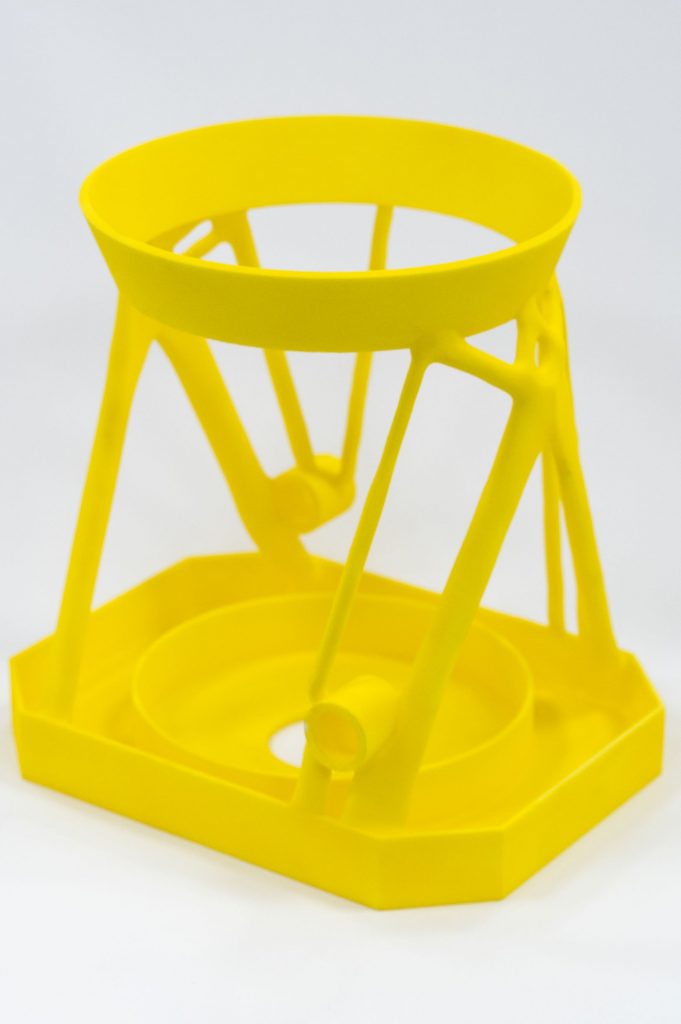As part of our ‘What are the advantages of 3D printing?‘ series we’re taking a closer look at each of our top ten factors. In this article we explore how ‘sustainable’ additive manufacturing can claim to be.
The subject of ’green manufacturing’ is complex and, much in the same way as electric car production there are many layers to what can or should be defined as “sustainable” – the final product might have impressive green credentials for the end user, while aspects of its production might involve similar environmental impact to that of a conventional internal combustion engine.
Despite the demonization of plastic in the last decade, 3D printing is inherently sustainable in many ways and can, when deployed intelligently, reduce waste, localise production and increase recycling.
The idea that 3D printing is the pinnacle of green manufacturing though is some way off the mark. A study produced by Loughborough University in the UK showed that in reality the use of lasers and heat during the printing process means that energy usage is extremely high, much greater in fact than the conventional technologies it is often compared to.
Material usage
There is an argument however that this is offset by the minimal material usage. 3D printing typically demands significantly less material than a traditional process, as it uses only the material required to build the part (plus a small amount of sacrificial material). Subtractive manufacturing cuts away large amounts of materials which then goes to waste.

Optimised Design
With 3D printing, engineers can now optimise designs to reduce the amount of material required even further without impacting the strength or integrity of the part, especially through the use of automated design optimisation tools. For example, design features like lattices and honeycomb structures significantly reduce the material and therefore overall weight of a component, whilst still retaining the required strength to function. This is an important factor for the automotive and aerospace sectors, where a reduction in weight has a direct impact on fuel consumption. Autodesk ran a proof of concept in 2020 by amalgamating traditional casting and 3D printing methods, producing a prototype economy class airplane seat frame which was, on average, 54% lighter than its conventional counterparts. These seats collectively saved up to 63 tonnes of fuel per aircraft on the Airbus A380, reducing carbon emissions by 126,000 tonnes in the same period (equivalent to removing 80,000 cars from the road for a year!). As in this example, 3D printing is uniquely capable of consolidating multiple parts into fewer or even just one, component which means fewer assemblies, fewer fasteners and a simpler route to recycling. At a time when the aviation industry is under pressure to reduce emissions, routes to lightweight planes and reduced fuel are most highly sought after.
Distribution emissions
Until the “holy grail” printer exists which is “plug and play” and caters to multiple materials at an acceptable price point the vision of building-on-demand on location is not here yet. Nonetheless, the events of the last 18 months have caused companies to start seriously rethinking supply chains – paving the way for specialist service bureaus who take out the trials and tribulations out of running complex machinery. The ability to print parts anywhere, and in a relatively small factory footprint, theoretically could significantly lower distribution emissions through transportation, as well as removing the need for monstrously large storage facilities. For some early adopters in the automotive and aerospace sectors, where emissions figures are most dramatic, the environmental implications are huge.

Material types
Polymers are also highly recyclable. Much of Ricoh 3D’s waste powder is recycled and reused – 90 per cent of our flagship polypropylene material is recycled within the process, making this one of the lowest refresh rate SLS materials on the market today.
Imaginative solutions are now also appearing on the market for waste material recycling. Some companies such as Switzerland-based Hot Wire Extensions are taking waste SLS 3D nylon powder and creating spectacular pieces of furniture and art installations. Market leader Materialise have long been using waste nylon material for the manufacture of non-functional cosmetic parts for sale to the general public.
Nylon is still the dominant material in 3D printing internationally, but it is amongst the most difficult to dispose of. For this reason, Ricoh 3D champions polypropylene as an alternative to nylon as it offers equivalent, or even superior, properties at a comparable cost, and can be recycled with much greater ease.
Demand for bio-based materials produced from plants, natural oils or bacteria-grown matter, as opposed to traditional petroleum-based materials, is also emerging across industry, with the likes of Lego vowing to eliminate virgin fossil-based plastics from their products by 2030 through investment in recycled and bio-based materials. PLA (PolyLactic Acid) material is made from entirely renewable sources and has been popularised amongst home users via FDM printing. These biodegradable, renewable materials may not be suitable for all applications, but are increasingly being refined by material companies to have improved properties. Undoubtedly, we will continue to see innovations in energy consumption and material efficiency dominate the agenda, in tandem with accelerated adoption of generative design tools which lightweight and consolidate products. It’s not “green” yet, but 3D printing may well prove critically important in creating a more sustainable manufacturing industry.
